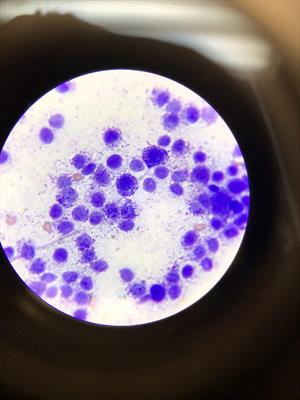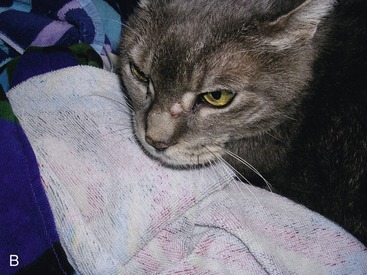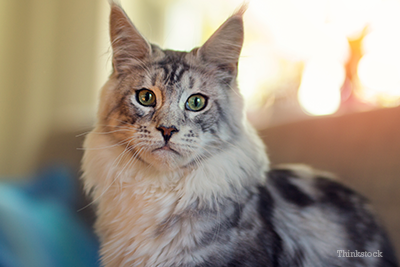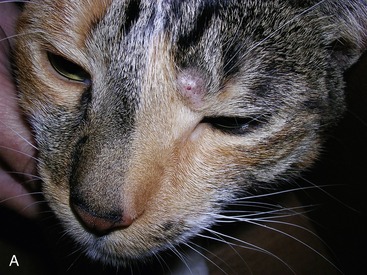mast cell tumor cat neck
If it changes or gets bigger they may suggest surgery. They may develop anywhere on the body surface as well as in internal organs but the limbs especially the back of the upper thigh lower abdomen and chest are the most common sites.
The diverse malignant stromal and immune cells in tumors affect growth metastasis and response to therapy.

. Mast cell tumors are the most common malignant tumor seen in dogs. Insects such as botlfies or screwworms can bury themselves into the skin of a dog and leave eggs or larvae in the tissue of the dog. They may be seen in dogs of any age but occur most commonly in dogs 8 to 10 years old.
Most mast cell tumors arise in the skin but technically they can arise anywhere that mast cells are found. What causes this cancer. What is Mast Cell.
Since parathyroid tumors are small and are located deep in the neck there are usually no external signs to prompt an owner that a dog might have a parathyroid tumor. Head and neck squamous cell carcinoma HNSCC is characterized by complex relations between stromal epithelial and immune cells within the tumor microenvironment TME. This may result in accumulation of necrotic debris in the subcutaneous space increasing the risk of systemic adverse reactions including death from mast cell degranulation see Contraindications Warnings and Adverse Events.
Hypercalcemia can cause dysfunction in many organs. Mast cell tumors are most common in older purebred dogs including the Boxer Boston Terrier Bulldog and Schnauzer. Testicular Tumor is marked by noticeably enlarged testicles.
Mast cell tumors are notoriously invasive and difficult to treat. Li et al. Cats with cutaneous mast.
Mast Cell Tumors One of the most common skin tumors in dogs mast cell tumors are raised growths that appear on your dogs skin. Skin Cancer Epidermotropic Lymphoma in Cats. Murine respirovirus formerly Sendai virus SeV and previously also known as murine parainfluenza virus type 1 or hemagglutinating virus of Japan HVJ is an enveloped150-200 nm in diameter a negative sense single-stranded RNA virus of the family Paramyxoviridae.
A Design of KP-HELLO autochthonous lung tumor model. KP or uMT-KP mice were intratracheally infected with 5 10 4 PFU Lenti-HELLO-Cre. Basal Cell Tumor in Cats.
The tumor microenvironment is a highly complex ecosystem of diverse cell types which shape cancer biology and impact the responsiveness to therapy. Mast cell tumors appear as lesions and can be either benign or malign. Mast Cell Activation Syndrome MCAS is a disorder where components of the blood stream namely mast cells secrete various substances which can be involved in an allergic reaction or inflammatory reactions.
An expanding body of preclinical evidence suggests EGCG the major catechin found in green tea Camellia sinensis has the potential to impact a variety of human diseasesApparently EGCG functions as a powerful antioxidant preventing oxidative damage in healthy cells but also as an antiangiogenic and antitumor agent and as a modulator of tumor. Mast cell tumors are the second most common skin tumor in cats. 14700 Citicorp Drive Bldg.
To date it remains unclear whether PD-1 blockade acts on tumor-resident or circulating T cell populations van der Leun et al 2020 since TIL clonal replacement has been reported following successful ICB Yost et al 2019 and PD-1 blockade may mobilize PD-1 T cells in the tumor draining lymph nodes Dammeijer et al 2020. Instead it is the clinical signs caused by excessive calcium levels in the bloodstream hypercalcemia that prompts an owner to seek veterinary attention. 3 Hagerstown MD 21742.
Mast cell tumors are the most common splenic tumor tumor of the spleen second most common skin tumor and third most common intestinal tumor in cats. Tumor-derived exosomes can suppress the proliferation and cytotoxicity of CD8 T cells. If its just a fatty tumor they may suggest to do nothing and watch the tumor.
Do not inject STELFONTA into subcutaneous mast cell tumors located above the elbow or hock eg. It also can refer to an accumulation or nodule of mast cells that resembles a tumor. Swelling can occur in either one or both the testicles.
There are also generalized blood cell splenic and digestive tract forms of mast cell sarcoma. To enable the development. Signaling via PD-1PD-L1 will transmits negative regulatory signals to T cells inducing T-cell inhibition reducing CD8 T-cell proliferation or promoting T-cell apoptosis which effectively reduces the immune response and leads to.
Mast cell tumors are a kind of tumor named for the type of skin cell from which they grow. More common on the torso and perianal area it is possible the dog can develop mast cell tumors on their neck. A mastocytoma or mast cell tumor is a type of round-cell tumor consisting of mast cellsIt is found in humans and many animal species.
Why a particular cat may develop this or any cancer is generally not straightforward. We profiled transcriptomes of 6000 single cells from 18 head and neck squamous cell carcinoma HNSCC patients including five matched pairs of primary tumors and lymph node metastases. Some cutaneous mast cell tumors will spontaneously regress.
Zhang and colleagues report that the exosomes adhere to activated CD8 T cells through an ICAM-1-LFA-1 interaction which is a prerequisite for exosomal PD-L1-PD-1. Programmed cell death 1 ligand 1 PD-L1 is the ligand for programmed death protein-1 PD-1 is associated with immunosuppression. Skip to main content.
They may be itchy. Investigate how cancer cells evade immune attack and resist immunotherapies. On the body head or neck.
Mast cell tumors can also appear on the cats skin usually on the head or neck. Cancer cell-derived or allergy-released histamine binds to HRH1 on tumor-associated macrophages that suppress CD8 T cell function accelerate tumor growth and confer immunotherapy resistance. More than one tumor may be.
B cells are required to drive tumor-specific TFH cell responses and tumor-infiltrating effector CD8 T cell responses in KP-HELLO autochthonous lung tumor model related to Figures 2 3 and 4 and STAR Methods. Gastrointestinal Problems The massive release of histamine associated with mast cell tumors can also cause significant problems with the gastrointestinal system leading to stomach ulcers vomiting and diarrhea. Here we analyze the microenvironment of.
Maternal Behavior Problems in Female Cats. Mast cell tumor. Tumors caused by mast cells are cancerous.
Additionally cutaneous mast cell tumors found on the head and neck of cats are less aggressive than those found in dogs. However if you notice a tumor on your cat it is recommended to schedule an appointment with your primary care veterinarian for evaluation. Change of address except Japan.
However before discussing MCAS we need to understand what the mast cell is and where it comes from. It typically infects rodents and it is not pathogenic for humans or domestic animals. Mast Cell Tumor Mastocytoma in Cats.
Mast cells originate from the bone marrow and are normally found throughout the connective tissue of the body as normal components of the immune system. Learn how to deal with cat diseases with expert advice from the vets at PetMD.

Figure 3 From Mast Cell Tumors In Cats Semantic Scholar

Mast Cell Tumors Veterinarian In Montgomery Al Animal Hospital Of Montgomery

Mast Cell Tumors In Dogs And Cats Veterinary Partner Vin
Mast Cell Tumor Or Something Else Thecatsite

Mast Cell Tumor Mastocytoma In Cats Petmd

Mast Cell Tumors Veterinarian In Montgomery Al Animal Hospital Of Montgomery



